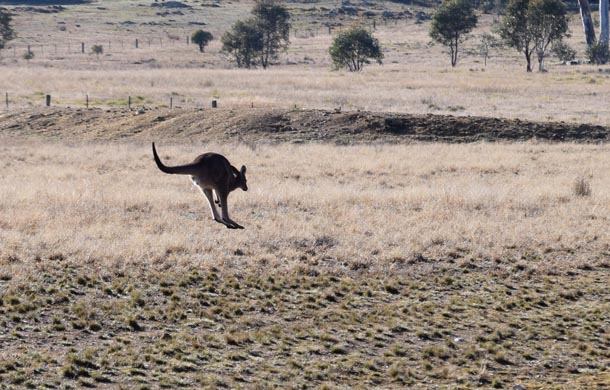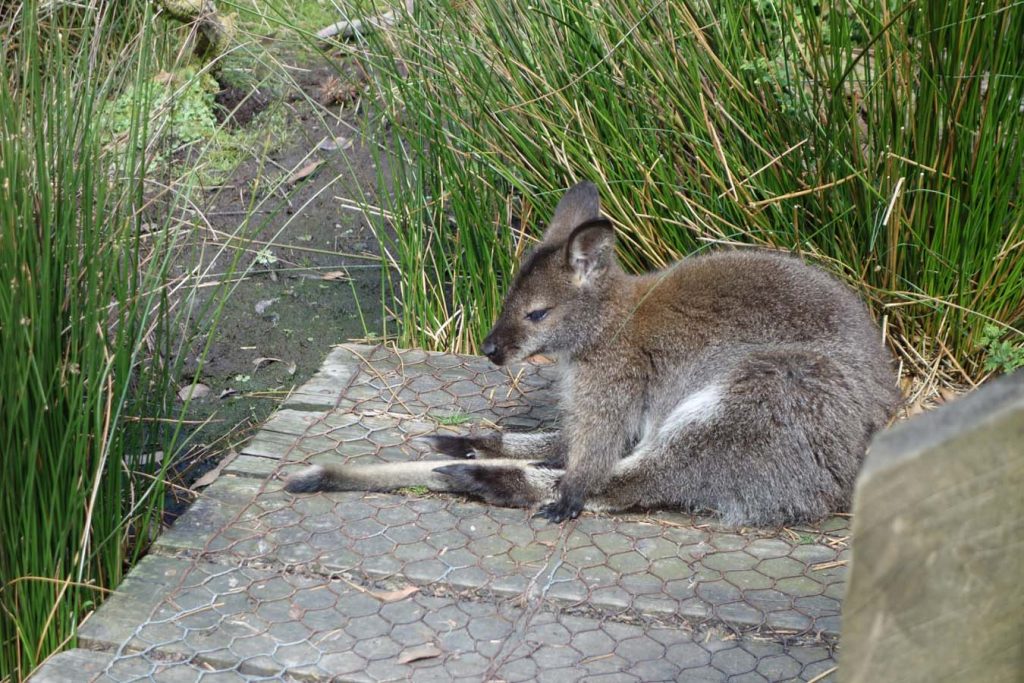Kangaroos and Wallabies
Australian Wildlife
Without doubt the most common animals seen on Australian hiking trails are Kangaroos and Wallabies. In our case it’s rare we don’t see at least one Kangaroo on trail, often many more. Wallabies aren’t so common in our area and given they are smaller in stature, they can be harder to spot. Wallabies also tend to be a bit more skittish often hopping away much sooner than Kangaroos.
Kangaroos and Wallabies are marsupials which are characterised by premature young being born in an incomplete state. The forelimbs of their young are developed and the toes are armed with sharp, curved claws. They use these claws to make the journey to the pouch, many times the body length of the one month old foetus and continue development while attached to the nipples on the mother’s lower belly.
On a recent walk it occurred to me that as Australians we tend to take Kangaroos and Wallabies for granted, they’re just part of the furniture. But when people come from overseas or even from parts of Australia where you don’t come across Kangaroos and Wallabies regularly, they tend to be a bit of a novelty so what do we need to know about Kangaroos and Wallabies?
Kangaroo and Wallaby facts
So what do you need to know about Kangaroos and Wallabies?
What’s in a name?
Wallabies developed from a common ancestor sometime in the past and while closely related to Kangaroos, are not the same thing.
- Kangaroos and Wallabies are Macropods which means ‘Big Feet’
- There are 45 species of Kangaroos and Wallaby, most of which are found in Australia and a few in New Guinea
- Wallabies are smaller than their larger Kangaroo cousins
- A male Kangaroo is called a Boomer or Buck and a female Kangaroo is called a Flyer or Doe
- A male Wallaby is called a Boomer or Buck and a female Kangaroo is called a Flyer, Doe or Jill
- A juvenile Kangaroo or Wallaby is called a Joey
- The Joeys finish their development in a forward facing pouch, as do possums. Other marsupials such as Wombats and Koalas, have pouches that open backwards
- A group of Kangaroos or Wallabies is called a mob
How many?
- The estimated Kangaroo population is approximately 43 million – this figure is an estimate only
- Wallaby populations aren’t clearly defined but they are less common than Kangaroos with many species being endangered
- Kangaroos and Wallabies are often harvested to reduce over population or for their meat which is consumed by humans or used in pet food – in 2001 the the national harvest figure was around 5.5 million
Size
- Large male Kangaroos can reach up to two metres in height when standing erect and weigh around 90 kg
- Females are typically much smaller than the males
Lifespan
- Wallabies live for around 11-14 years
- Kangaroos live for around 20-25 years
Are Kangaroos dangerous?
- Short answer no! If you don’t bother or threaten them then you have more chance of being attacked by a household pet
- But ….
- Large male Eastern Grey Kangaroos can have very long thick claws and an innate sense of their own ability to protect themselves. If you threaten a Kangaroo, particularly the large males, then they can inflict severe damage so give them space. I recently came across two male Kangaroos fighting and on my return trip not long after the loser was sitting in the middle of the trail with no intention of moving which required me to go off-trail to get around
- Kangaroos can and do kill dogs so if you are out walking with your dog keep them well under control because Kangaroos will protect themselves
Many older Australians were brought up with the Skippy TV show from the late 1960’s. If you haven’t seen this show watch the video at this link because Skippy puts Lassie to shame. Having said that, this show was fantasy with little reality and as with any wildlife, anywhere in the world its best to allow our wild animals space and not approach them – just admire them for what they are from a distance.

Red Necked Wallaby in Namadgi National Park, south of Canberra

Eastern Grey Kangaroo in northern Canberra. This big boy was over 1.8 metres in height when upright and was in his prime (i.e. very muscular) when the image was taken. Out of approximately 200 Kangaroos in this large paddock, this male was by far the largest

Kangaroo mid bound

Wallaby at one of the huts on the Overland Track in Tasmania. This one was having a rest on one of the adjacent boardwalks at one of the huts and didn’t really care about the many hikers nearby